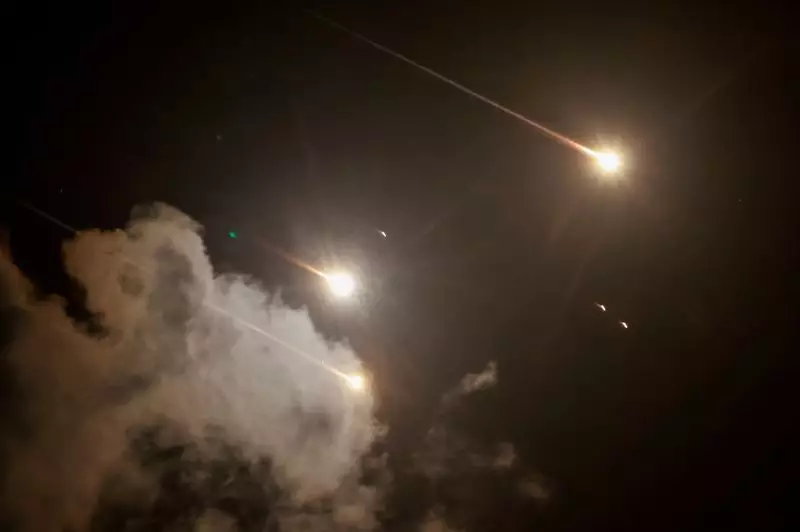The escalating tensions in global geopolitics have revived discussions about missile defense systems and their effectiveness against various threats. In light of Iran’s significant missile strikes against Israel earlier this month, experts are scrutinizing how such events might inform the United States’ strategic posture in the Indo-Pacific, particularly in relation to China. While comparisons between the two scenarios yield valuable insights, they also highlight the varied challenges each presents.
Iran’s missile barrage, which included nearly 400 missiles this year, serves as a unique case study in missile defense effectiveness. Analysts note that while Israel’s advanced defensive measures successfully intercepted many of these missiles, the frequency and scale of these attacks offer a practical glimpse into how well modern missile defense systems can withstand sustained aerial bombardment. This scenario raises questions about how the U.S. might respond to a potential missile onslaught from China, a scenario many might view as analogous, yet fundamentally distinctive due to various factors.
Collin Koh, an expert at the S. Rajaratnam School of International Studies, emphasizes that the predominant message garnered from Iran’s recent actions could cause U.S. officials to recalibrate their understanding of deterrence. The notion that effective missile intercept systems can neutralize threats must now be reconsidered; deterrence may have to shift focus from denial—where defensive systems are effective—toward punishment-based strategies, where offensive capabilities serve as deterrents against mass missile strikes.
The geopolitical theater in the Indo-Pacific is vastly different when compared to the Middle East. Analysts suggest that while Iran operates within a relatively confined geographical expanse that has facilitated missile launches and interceptions, engaging with China presents unique complexities. The remarkable distances involved and the advancements in China’s missile arsenal complicate the existing dynamic, as the capabilities of these weapons far exceed those that Iran has at its disposal.
Furthermore, the varied nature of China’s missile technology, which includes sophisticated maneuvering warheads, presents an even larger challenge. This leads to the possibility that the U.S. may not have the same degree of success in intercepting a Chinese assault as it did with Iranian missiles. Creating a reliable countermeasure capable of addressing such threats becomes a critical strategic imperative for the U.S. and its allies.
In response to these challenges, the United States has begun deploying newer technology in the region, most notably the AIM-174B air-to-air missile and ground-based Typhon missile systems. These efforts, however, are part of a broader strategy aimed at countering Chinese missile capabilities. The Pentagon’s calculations suggest that without an effective integrated defense, the U.S. systems could struggle against a well-coordinated Chinese missile offensive.
As China’s arsenal continues to grow—potentially encompassing hundreds of intermediate-range ballistic missiles like the DF-26—the U.S. must reassess its defensive infrastructure. It is not merely a question of advancing technology, but also one of integrated command and control, which is vital in responding to a large-scale missile attack.
While the information gleaned from Iran’s missile attacks may compel military strategists to better understand potential missile confrontations, it also underscores a critical vulnerability. The lack of clarity regarding how each missile defense system can be expected to perform could instigate an arms race or a preemptive strike mentality, with countries feeling pressured to act before they are struck.
Ankit Panda from the Carnegie Endowment for International Peace warns of the significant escalation risks inherent in extending military strategies based on incomplete data. As nations develop plans based on perceived threats, any misunderstanding could have catastrophic implications, leading to broader conflicts.
Iran’s missile strikes reinforce the urgent need to reevaluate and possibly reconfigure existing missile defense strategies. The lessons learned from these confrontations must be diligently analyzed to craft a coherent response to the complexities posed by both Iran and China.
The path forward lies in formulating a strategy that combines effective interception capabilities with credible deterrent options. By focusing on integrated defense systems capable of addressing the unique challenges presented by evolving missile technologies, the U.S. and its allies can reinforce their regional security dynamics and deter potential aggressors more effectively. The stakes in the Indo-Pacific are immeasurable, and the imperative for a robust, adaptive military strategy is more urgent than ever.

